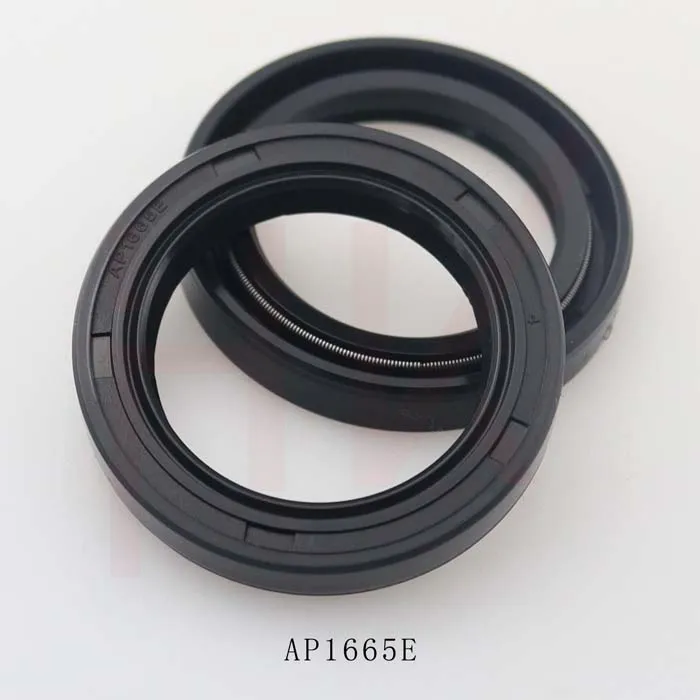Oct . 09, 2024 22:45 Back to list
dust seal vs oil seal
Understanding Dust Seals vs. Oil Seals Key Differences and Applications
When it comes to machinery and mechanical systems, the proper functioning of moving parts is crucial for efficiency and longevity. Two essential components that often play a significant role in ensuring this efficiency are dust seals and oil seals. While they might seem similar at first glance, they serve different purposes and are designed for distinct applications.
What is a Dust Seal?
A dust seal, often referred to as a dust boot or dust cover, is designed primarily to prevent contamination from dirt, dust, and other particulates that could potentially damage the internal components of machinery. These seals are typically made from rubber, plastic, or specialized polymer materials that offer flexibility and durability. Dust seals are commonly used in applications such as automotive wheel bearings, suspension systems, and industrial machinery where exposure to dirt and debris is high.
The primary function of a dust seal is to create a barrier that prevents harmful particles from entering sensitive areas. For instance, in automobiles, dust seals protect critical components such as joints and bearings, ensuring that the lubricant within these parts remains uncontaminated. This is essential for maintaining the optimal performance and extending the lifetime of the equipment.
What is an Oil Seal?
On the other hand, an oil seal, also known as a fluid seal, serves a different purpose. Its main function is to contain lubricating oils and prevent them from leaking out of machinery. Oil seals are often made from similar materials as dust seals but typically have a design that includes a lip or multiple lips that create a tighter seal against a rotating shaft. This lip is crucial for ensuring that oil remains contained within the system, thus preventing leaks that could lead to decreased lubrication and ultimately result in mechanical failure.
Oil seals are widely used in various applications, including automotive engines, gearboxes, and hydraulics. In these systems, maintaining the correct level of lubrication is vital for reducing friction between moving parts, which can prevent overheating, wear, and tear, and ultimately prolong the life of the equipment.
dust seal vs oil seal

Key Differences
1. Function - Dust Seals Prevent dirt and dust from entering mechanical assemblies. - Oil Seals Prevent lubricating oil from leaking out of systems.
2. Design - Dust Seals Usually have a simpler design, made to block particulates while allowing movement. - Oil Seals Feature a more complex design, often incorporating a sealing lip for containment of fluids under pressure.
3. Applications - Dust Seals Commonly found in environments with high exposure to dirt, such as construction sites and outdoor machinery. - Oil Seals Used in applications where fluid containment is critical, such as engines and gearboxes.
4. Material - Both typically utilize similar materials, but the specific formulation may differ based on their intended application. Oil seals may require materials that can withstand exposure to oils and other fluids, while dust seals focus more on resistance to environmental particulates.
Conclusion
Understanding the differences between dust seals and oil seals is crucial for engineers and technicians involved in machinery design and maintenance. Each type of seal plays a vital role in ensuring the reliability and efficiency of mechanical systems. By selecting the appropriate seal for their specific application, professionals can protect machinery from contaminants and leaks, ultimately enhancing performance and extending equipment lifespan. Proper maintenance and regular inspections of these seals can prevent costly repairs and unplanned downtimes, making them essential components in any mechanically operated system.
-
TCN Oil Seal Metal Ring Reinforcement for Heavy Machinery
NewsJul.25,2025
-
Rotary Lip Seal Spring-Loaded Design for High-Speed Applications
NewsJul.25,2025
-
Hydraulic Cylinder Seals Polyurethane Material for High-Impact Jobs
NewsJul.25,2025
-
High Pressure Oil Seal Polyurethane Coating Wear Resistance
NewsJul.25,2025
-
Dust Proof Seal Double Lip Design for Construction Equipment
NewsJul.25,2025
-
Hub Seal Polyurethane Wear Resistance in Agricultural Vehicles
NewsJul.25,2025
-
The Trans-formative Journey of Wheel Hub Oil Seals
NewsJun.06,2025
Products categories
















